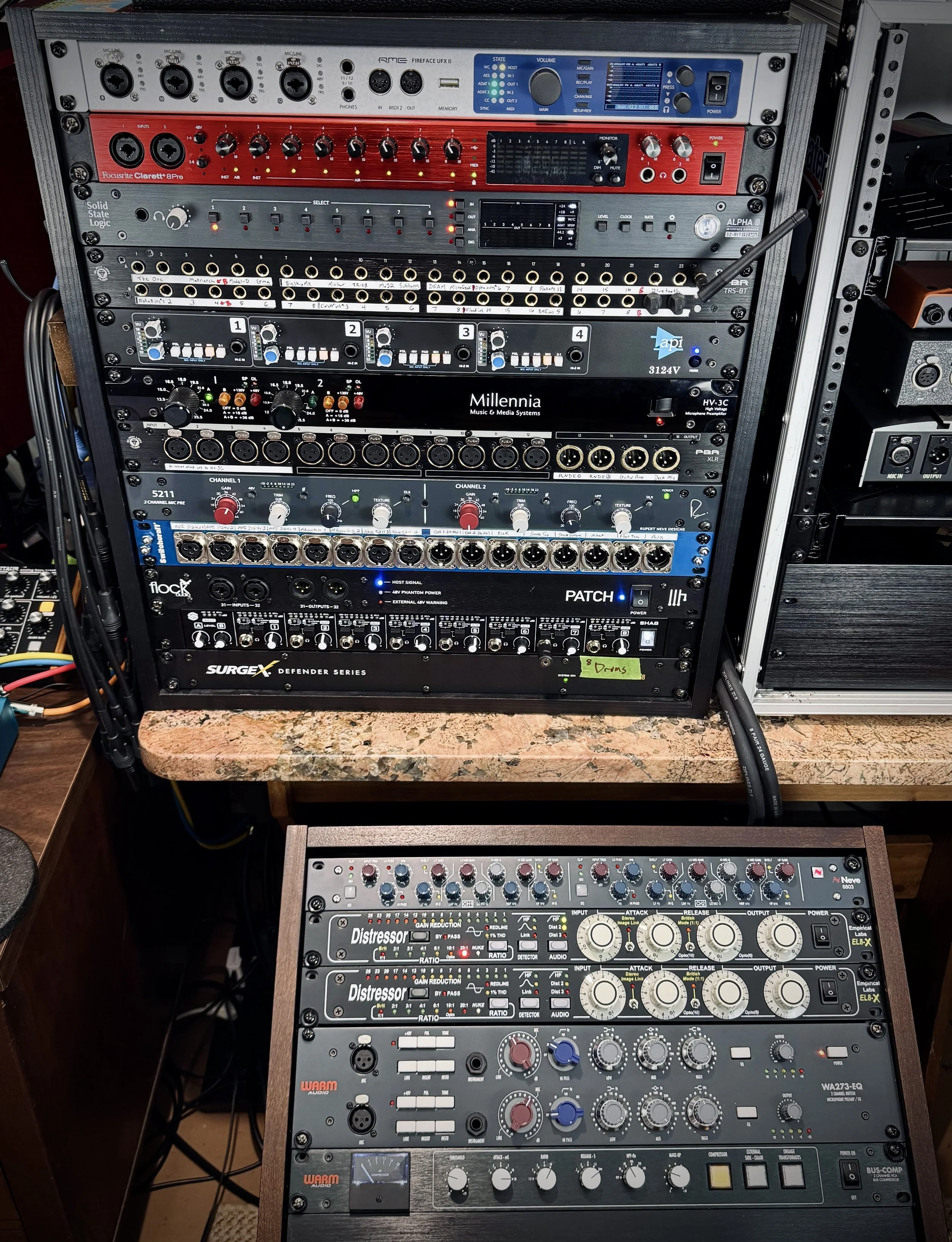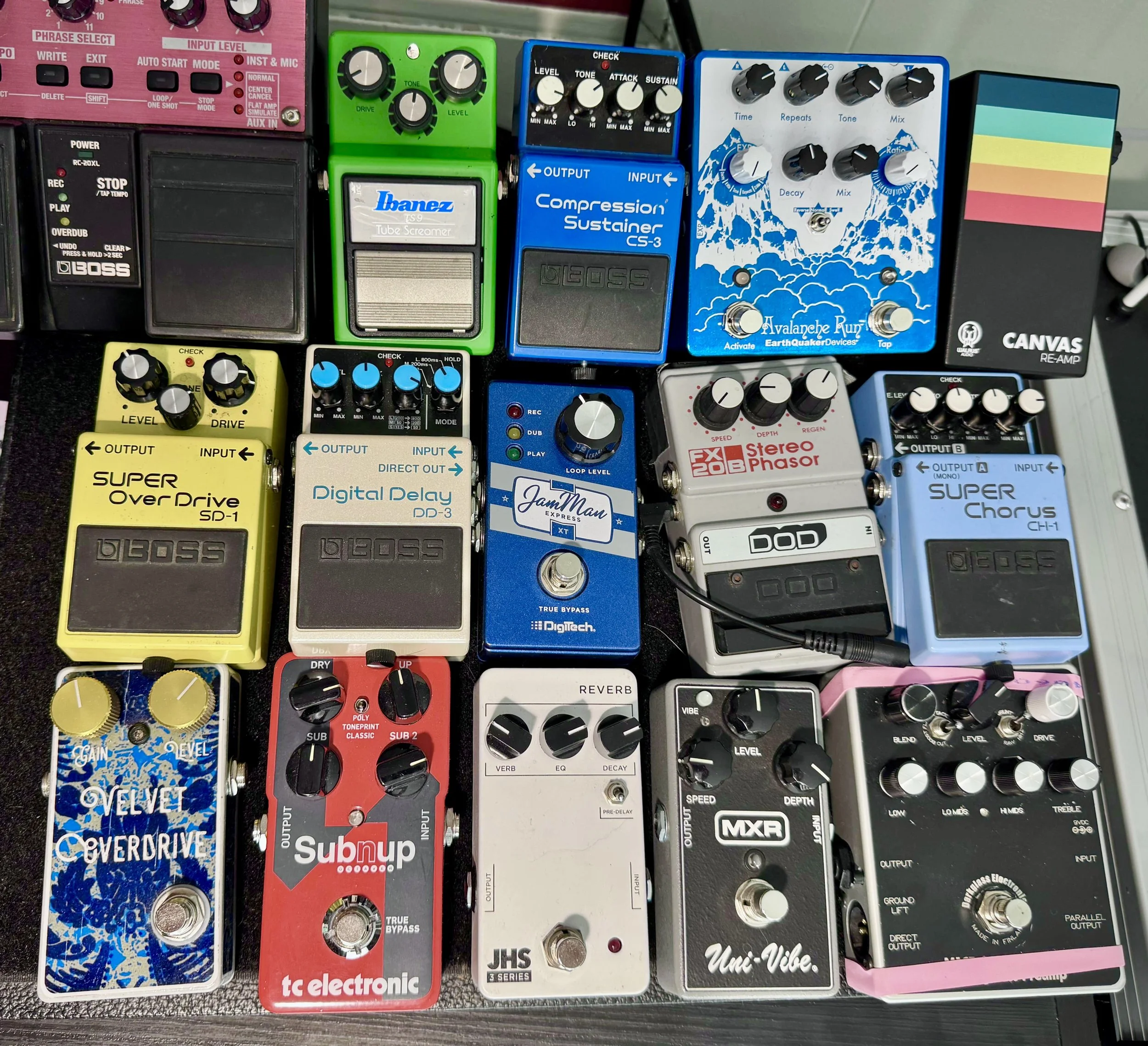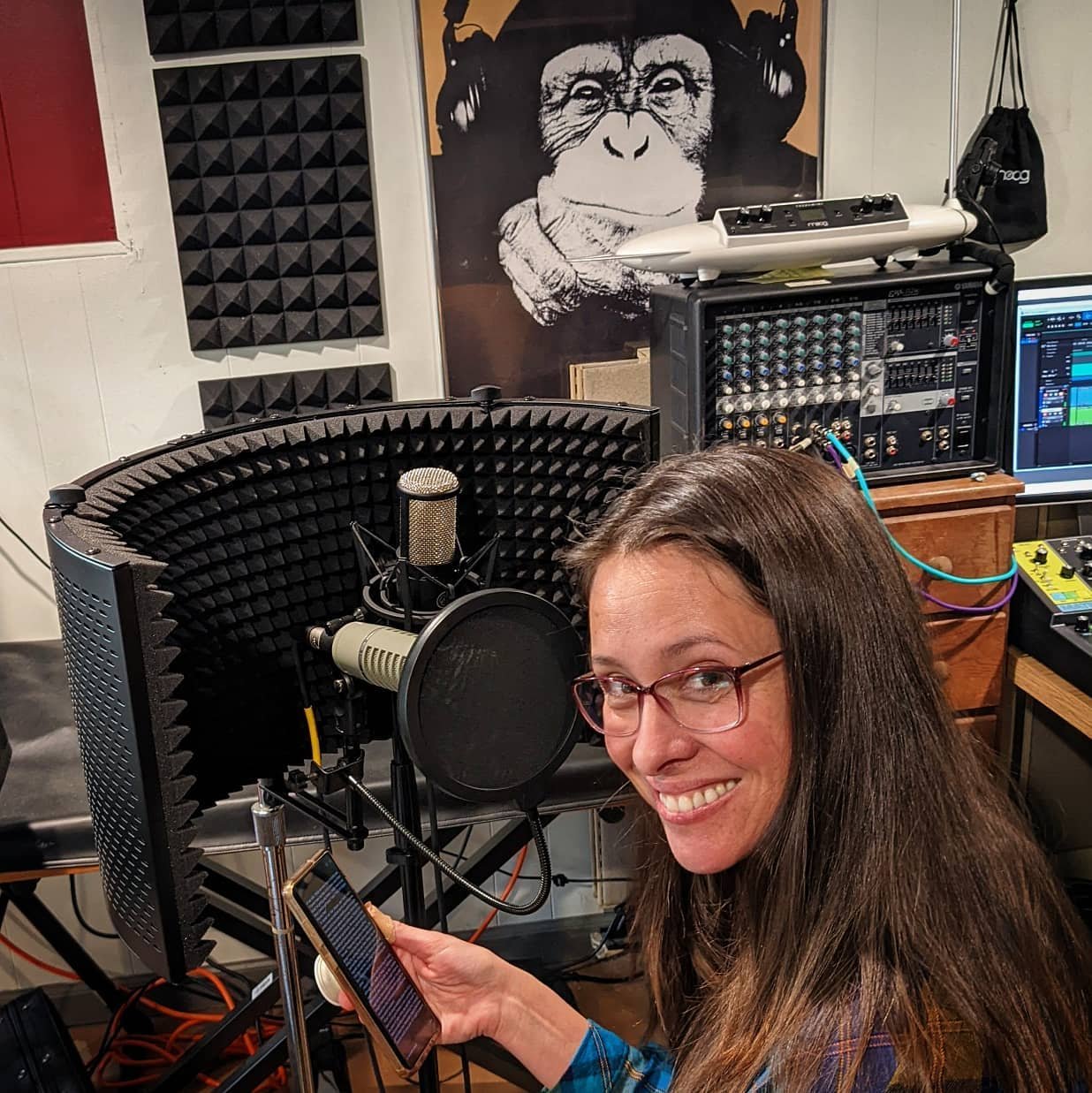Studios are for creativity!
There are as many ways to make music as there are musicians. Writing a piece is one thing; preserving the soul and energy of an intention— of that inspiration— is another. How do we capture lightning in a bottle?
Our studio specializes in composition, recording sessions and hybrid mixing. Whether kept simple or expanded into full arrangements, the goal is always the same: to express ideas with feeling. If you’re here, it’s because you care about the music as much as we do. Our process is aimed at reducing friction so that the technical gets out of the way of creativity. Let’s look:
Front End
Mics
Each link in the chain, each step of the “signal flow,” is important for maintaining the quality of audio as it makes its way to being tracked inside the computer. The initial point of contact with a performance is the microphone (or a DI box for instruments with outputs like electric basses or synthesizers). Having an array of various mics for different applications is crucial… Even the placement can drastically affect the perception of a sound source.
Some favorites in our collection include the stereo pair of Schoeps CMC 64 small diaphragm condensers (Beautiful on acoustic sources— natural and detailed), the Miktek CV4 large diaphragm condenser (Perfect on voice— vibey and robust) and the WA Fentone ribbon mics (Guitar amp? Drum overheads? Whatever needs that smooth, vintage touch…)
Preamps & Outboard Gear
Preamps:
The signals from mics and DIs are routed into preamplifiers to increase their gain to a usable level. A notable secondary function of preamps is to impart certain subtle colors to the sound. API preamps (like our 3124v) are said to be “punchy” while Neve preamps (like our 5211) are said to be “pillowy.” Millennia preamps (like our HV-3C) are “wide open” while the Warm Audio remake of the “legendary” Neve 1073s (the WA273-EQ) delivers a “bite” infused with a legacy.
Outboard Gear:
Coloration, saturation, equalization, compression and other enhancements can indeed be added digitally with software later on to similar effect. *Similar* effect, I’ll emphasize, because the debate over the sonic superiority of analog (outside of a computer, actual electric voltages) vs digital (inside of a computer, coded information) wages on forever. There are advantages, necessities and limitations for both modes and most studios are therefore “hybrid.” One definite advantage of analog: dialing everything in on the front end means a lot less time and effort editing later on. So, recording through EQs (like our Neve 8803), compressors (like our Distressors) can get the sound 90% finished right away.
Routing
With so much gear, it’s important to create efficient workflows to allow for quick setups. We try to embrace an “always on” philosophy. Everything in the studio is connected and ready to go at the flip of a couple switches. The drums and guitar amp are permanently mic’d, the synthesizers are wired into the interfaces and multiple patch bays allow for easy connections. A recent addition is the Flock Audio patch bay which uses digital actions to control analog signal flows— revolutionary! With this, all of the various mics/DIs can be patched to all the outboard gear (preamps, EQs, compressors, etc.) in various configurations before it ever gets to the converters in the interface, preserving the integrity of the channel all the way to the finish line.
Mixing
Although, printing the sound into a computer program isn’t actually the finish line. There is plenty of processing to do “inside the box” using DAWs like Pro Tools and Ableton with editing tools and plugins designed for precision and polish. Sometimes it’s useful to send the signal back out and “re-amp” it through effects pedals, speakers and synths to sculpt (or mangle) the audio more purposefully than can be done simultaneously with performance. (A unique feature of Irvin Music Studio is our collection of Moog effects pedals and synthesizers which serve as a makeshift modular rack for pre-recorded material or for immersive sound design.) Balance, panning, spatial reverb, stereo widening, and so much more contributes to a worthy mix.
Monitoring
All this input and output, including the outputs to the main monitors for listening, is facilitated by the RME UFX II interface and accompanying TotalMix digital mixer software— a system renowned for it’s reliability. Our main monitors, Focal ST6s (with a matching Sub 12 on the way) are a high-fidelity option suited to our current space. Sonarworks SoundID Reference calibration software compensates for frequency irregularities caused by the room. Acoustic treatment like sound absorbant insulation in the ceiling, office-cubicle dampening partition wall perimeters and light diffusers dotting hard surfaces also help to mitigate discrepancies between what’s performed, recorded, played back and heard.
Client Collaborations
Audio books/Spoken word
Spoken word and audiobook recording is also available. One book recorded in IMS was “In Her Element” by Selina Delangre, read by her daughter Carla Delangre (seen in photo). Other voiceover work clients include American Institute of Steel Construction and Mark Tullis for his book, “Dance of the Blue Ghost.”











